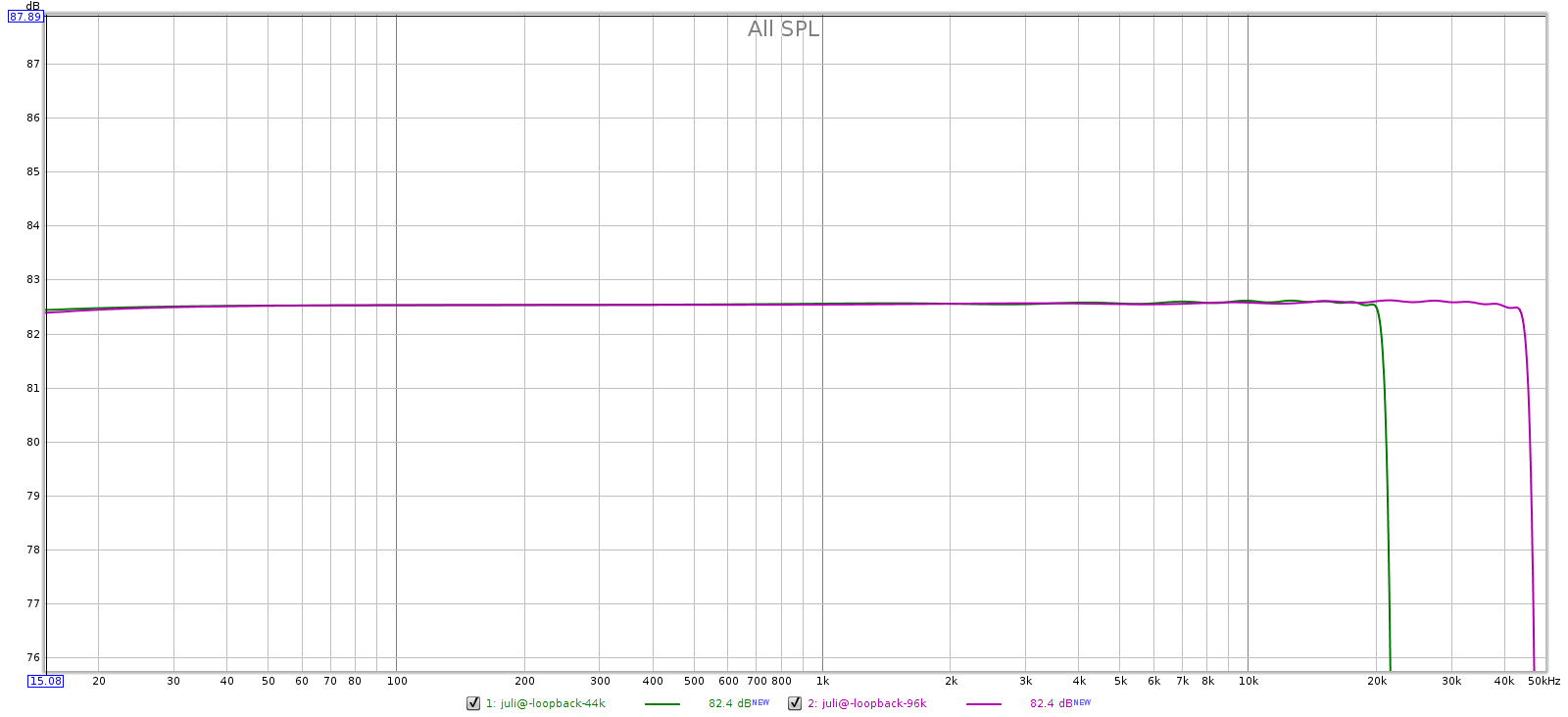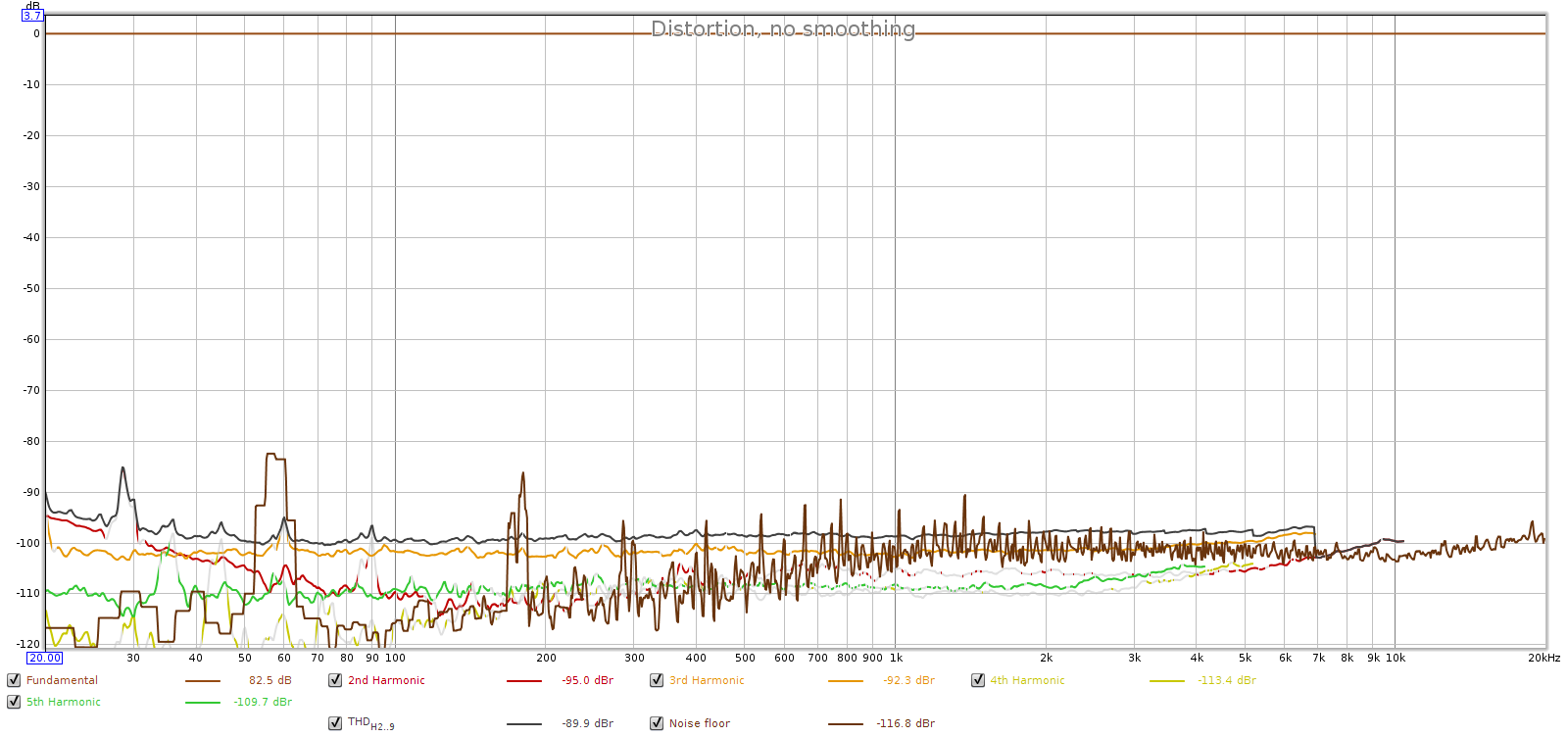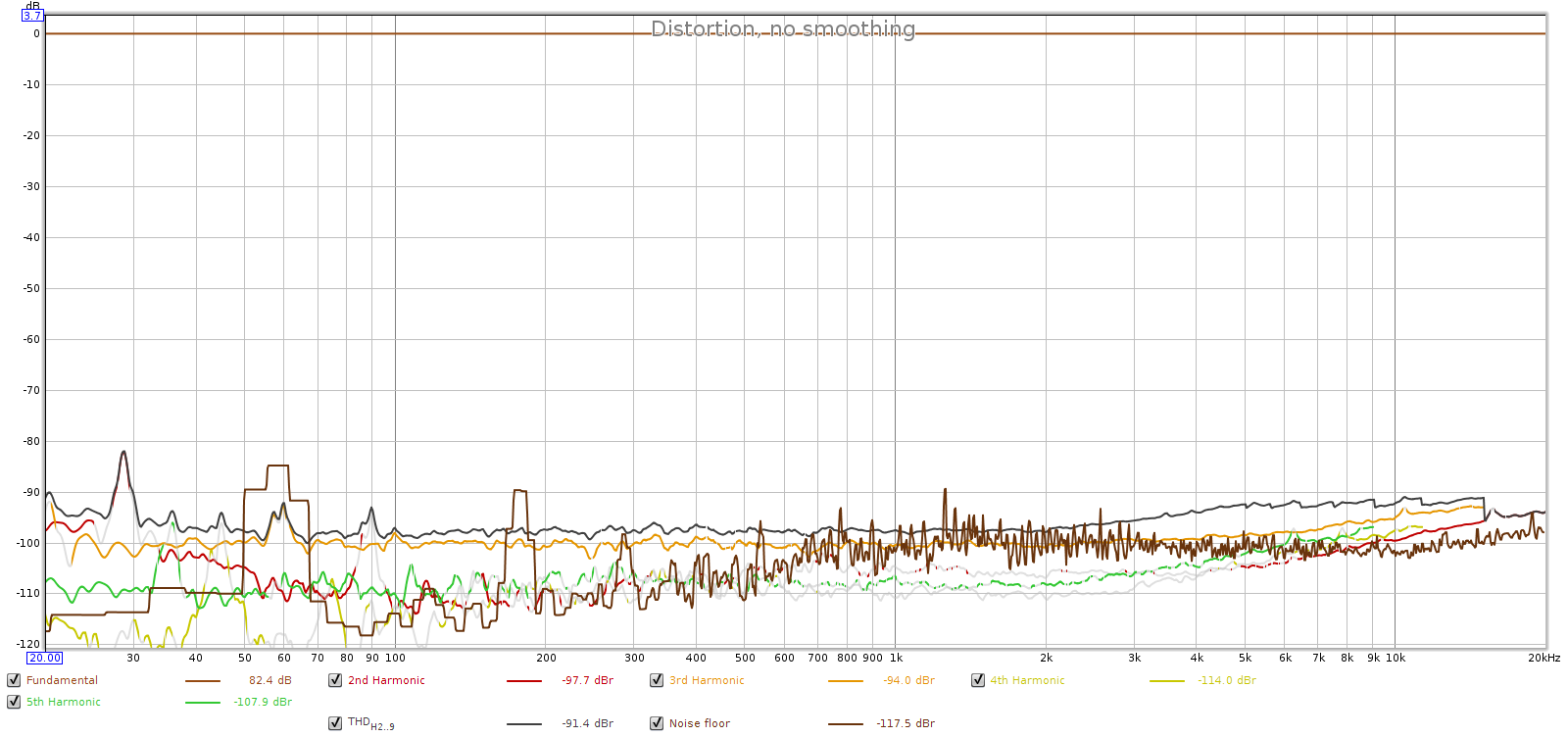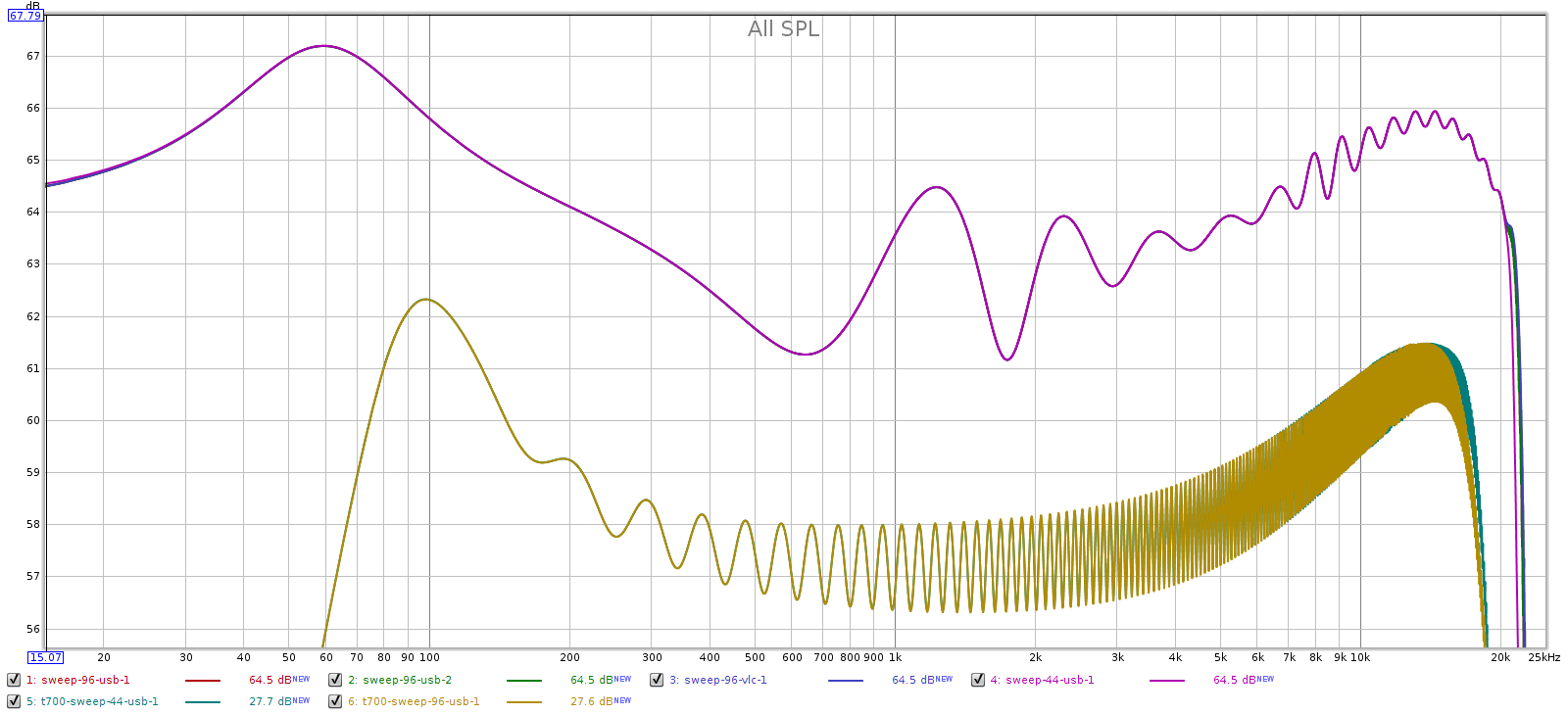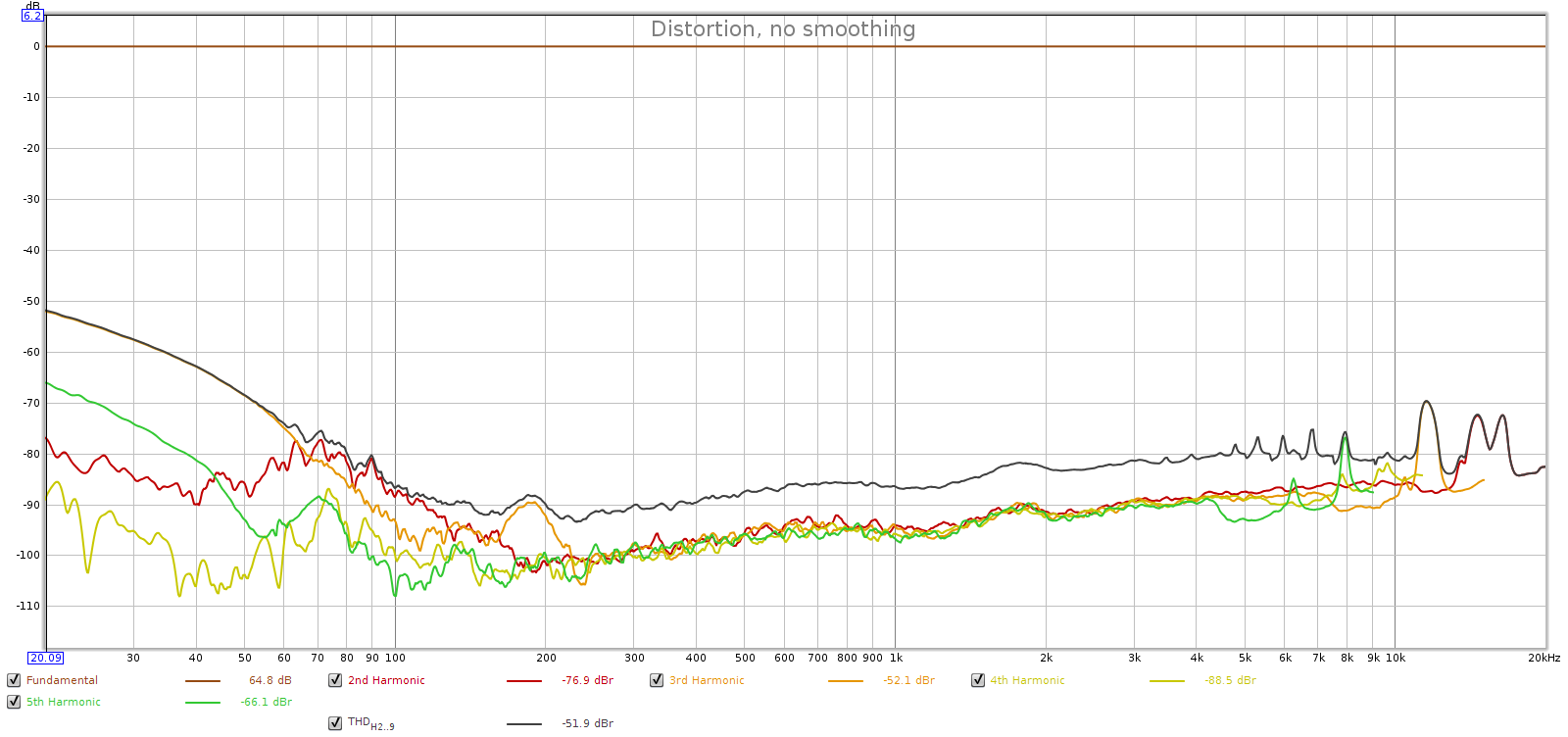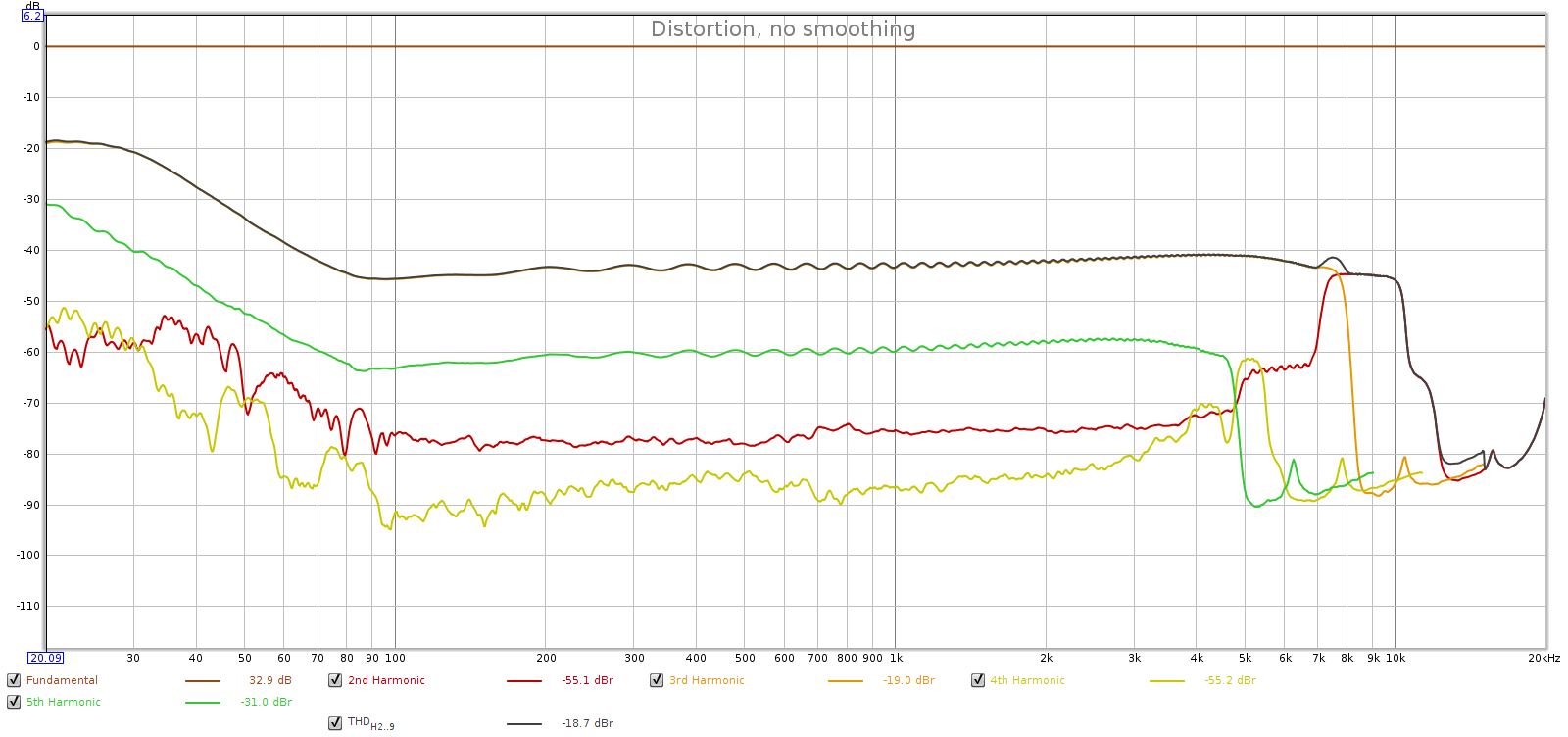I’ve read that most mobile devices (phones and tablets) have surprisingly good audio quality from their analog headphone outputs. To test this, I decided to measure mine and found that this is not necessarily the case.
Method
I used Room EQ Wizard to generate frequency sweep files at 44 kHz and 96 kHz. Copied the files to my phone (Galaxy Note 4 SM-N910T) and tablet (Galaxy Tab S SM-T700). Connected the device’s analog headphone output to my sound card’s analog input. Played the sweep files on the device at max volume, recorded using Audacity on my PC. Then used REW to “import sweep” and analyze the files.
The results showed audible discrepancies in both frequency response and distortion. So I played the files back using 2 different apps: USB Audio Pro (in bit perfect mode, all DSP disabled), and VLC. Both measured the same.
Baseline Loopback
I made these measurements with my sound card, so its performance is the baseline. To measure that, I used RCA cables to connect its outputs directly to its inputs to measure its loopback performance.
As you can see below, the Juli@ measures quite well for a sound card. It should be audible transparent.
Loopback Frequency Response
At both sampling frequencies, frequency response is flat with less than 0.1 dB variation through the audible spectrum. Phase response and group delay are equally flat.
Loopback Distortion
First 44.1 kHz, then 96 kHz. As you can see, distortion around -96 dB with a few peaks into the -80 range at 30, 60 and 180 Hz, probably related to 60 Hz power regulation.
Device Measurements
The baseline having been set, here are how my phone & tablet measured. These are raw, uncorrected so they are relative to the baseline.
Results: Frequency Response
The frequency response is nowhere near flat, with deviations plenty big enough to hear.
The top lines (purple/blue) are the phone, bottom lines (brown/teal) are the tablet. 44 kHz and 96 kHz are right on top of each other, so the sampling rate didn’t make any difference.
These response curves are so far off from flat I thought I measured it wrong. I double checked the apps playing back the frequency sweeps (USB Audio Pro and VLC), made sure they weren’t applying any EQ. Both were set to “bit perfect” or flat, and had the same response.
Results: Distortion
The phone’s distortion rises in the low frequencies to about -50 dB. That’s nowhere near as good as I expected and worse than inexpensive dedicated DACs. But it should be below perceptible thresholds. Especially since even good headphones typically have between 1% (-40 dB) and 10% (-20 dB) distortion in the bass.
The tablet’s distortion is significantly higher: -20 dB in the lows and about -40 in the mids and treble. This close to perceptible thresholds and may be audible. It’s dominated by 3rd harmonic.
Conclusion
The take-away here is to bust the myth that phones & tables produce decent sound quality from their headphone jacks; their main limitation is they have only enough power to drive sensitive IEMs, not full size headphones. They certainly do have this power limitation, but their sound quality may be compromised even when driving easy loads. Of course, other phones and tables may perform better than the ones I measured.
Frequency response varies by around 6 dB which is not only audible, but obvious. My old cassette tape deck had flatter frequency response! Distortion is “OK” but I’d like to see lower.
However, the phone or tablet can still be used as a musical source. All of the above limitations are in the built-in DAC and headphone amp. Instead, you can use an app like USB Audio Player to stream the musical data bits out its USB port to a dedicated DAC and headphone amp. This bypasses the above distortions. For portable listening you could use a USB dongle; some of them have surprisingly good measurements, far superior to what I saw above. For desktop/home listening you have a lot more options, using any DAC having a USB input.
